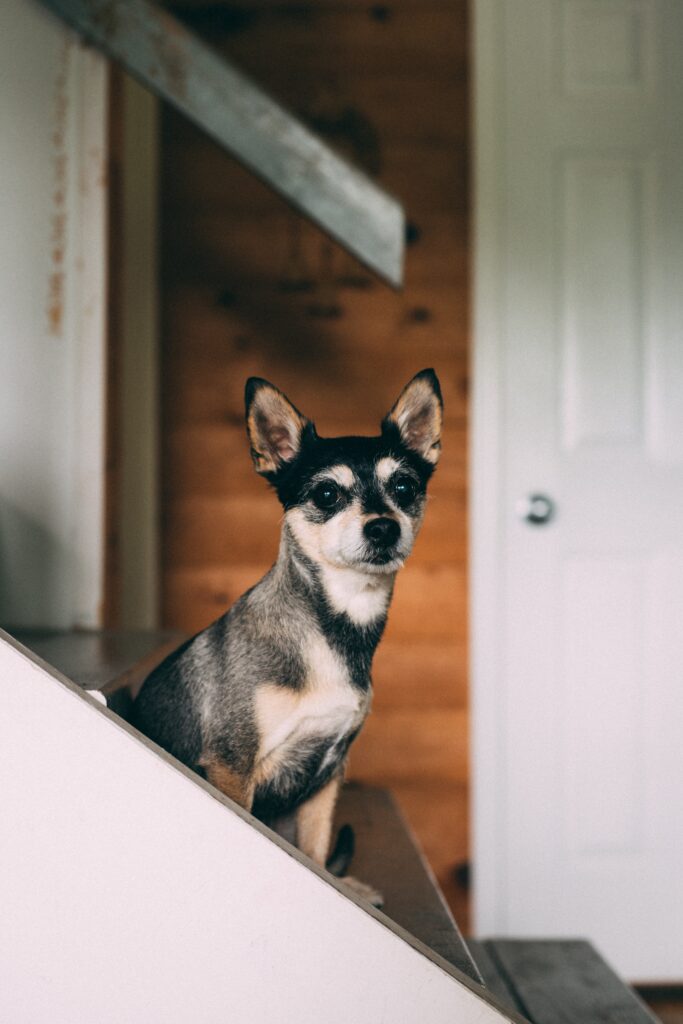Does your furry friend struggle to settle down for a good night’s sleep? We’ve got you covered with the ultimate guide on how to put your dog to bed! From creating a cozy sleeping environment to establishing a calming routine, we’ll show you the ropes.
Discover practical tips to help your beloved canine companion wind down, such as gentle exercise, soothing bedtime rituals, and the magic of bedtime snacks.

Say goodbye to restless nights and hello to peaceful slumbers for both you and your four-legged friend. Get ready to unlock the secrets of a perfect doggy bedtime routine, right here!
First here, in case your dog peed on the bed, how do you clean it?
Understanding the Importance of a Good Night’s Sleep for Dogs
Just like humans, dogs require adequate sleep to maintain their overall well-being. Proper sleep promotes physical and mental health, supports the immune system, and enhances cognitive function.
A well-rested dog is likelier to exhibit balanced behavior, be alert during the day, and have a stronger bond with their owner.
Thus now look up at 10 instant steps to put your dog on bed.
10 Instant Steps to put your dog on Bed
To set up a dog bed, follow these steps:
1. Choose a suitable location:
Select an area in your home that is comfortable and easily accessible for your dog. Consider a quiet spot away from drafts, noise, and foot traffic.
2. Clean the area:
Clear the chosen location of any debris, dirt, or objects that could harm your dog’s comfort or safety. Thus here you can look up how to wash a dog bed without a removable cover.
3. Measure the space:
Determine the dimensions of the dog bed and ensure that the chosen spot can accommodate it properly without any constraints.
4. Unpack the dog bed:
Remove the packaging and unfold or unroll the dog bed, following the manufacturer’s instructions if provided.
5. Fluff and shape the bed:
Gently manipulate the bed’s filling, such as foam or stuffing, to distribute it evenly and achieve a comfortable shape. This step may not be necessary for all types of dog beds.
6. Position the bed:
Place the dog bed in the chosen location, aligning it properly with the surroundings. Ensure that it is stable and won’t easily slide or tip over.
7. Add extra comfort (optional):
You can enhance the dog bed’s comfort by adding blankets, cushions, or soft toys that your dog enjoys.
8. Encourage your dog to use the bed:
Guide or coax your dog onto the bed using treats or toys. Offer positive reinforcement and praise when they settle down on the bed.

9. Monitor your dog’s response:
Observe how your dog interacts with the bed. If they seem hesitant or uninterested, try enticing them with treats or favorite toys. Make the bed a positive and appealing space for them.
10. Maintain cleanliness:
Regularly clean the dog bed according to the manufacturer’s instructions. This may involve removing and washing the cover, vacuuming or spot-cleaning the bed, or following any specific care guidelines provided.
8 Proven Methods to put your dog on Bed
1. Creating a Calm and Cozy Sleep Environment
To help your dog relax and feel secure at bedtime, creating a calm and cozy sleep environment is crucial. Ensure the sleeping area is quiet, away from excessive noise or distractions.
Consider using curtains or blinds to block out external lights that may disturb your dog’s sleep. Provide a comfortable and appropriately sized bed that offers support and cushioning for their body.
2. Establishing a Bedtime Routine
Dogs thrive on routine, and establishing a consistent bedtime routine can signal to your furry friend that it’s time to wind down. Consistency is key here. Develop a pre-bedtime ritual that includes activities such as a calming walk, gentle playtime, or a relaxing grooming session.
By following the same routine every night, your dog will gradually associate these activities with sleep and become more receptive to bedtime cues.
3. Providing Physical and Mental Stimulation
A tired dog is more likely to fall asleep quickly and stay asleep throughout the night. Engage your dog in physical exercise during the day to burn off excess energy.
Regular walks, interactive play sessions, and stimulating toys can help tire them out. Additionally, mental stimulation through puzzle toys or training exercises can exhaust their mind, making it easier for them to settle down at night.
Thus here, look up why does your dog hide his treat on his bed?
4. Considering Comfortable Bedding Options
The right bedding can significantly affect your dog’s sleep quality. Choose a bed that suits your size, age, and individual needs.

Some dogs may prefer orthopedic beds for joint support, while others might enjoy the coziness of a soft, plush bed.
Experiment with different types of bedding until you find the one that your dog finds most comfortable and inviting.
5. Implementing Relaxation Techniques
Just like humans, dogs can benefit from relaxation techniques to calm their mind and body before bedtime.
Consider using aromatherapy with dog-friendly essential oils known for their calming properties, such as lavender or chamomile.
Soft background music or white noise machines can also create a soothing ambiance. Gentle massages or using calming wraps can help reduce anxiety and promote relaxation.
6. Avoiding Late-Night Feeding
Feeding your dog too close to bedtime can lead to discomfort and disrupted sleep. Avoid providing meals or treats right before your dog’s designated sleep time.
Instead, aim to feed them at least a few hours before bedtime to allow for proper digestion.
This will help prevent digestive issues and the need for late-night bathroom breaks that can disturb your dog’s sleep.
7. Addressing Underlying Health Issues
If your dog is having difficulty falling asleep or staying asleep despite your best efforts, it’s important to consider underlying health issues. Pain, discomfort, or medical conditions can significantly impact their sleep quality.
If you suspect any health problems, consult with your veterinarian for a thorough examination and appropriate treatment.
Identifying and addressing these issues can greatly improve your dog’s sleep patterns.
8. Seeking Professional Help if Needed
Sometimes, putting your dog to bed can be challenging despite your best efforts. In such cases, seeking professional help from a certified dog trainer or animal behaviorist can be beneficial.
These experts can assess your dog’s specific needs and provide tailored guidance and techniques to promote better sleep. Here check out how to stop a dog from peeing on the bed.

They can offer valuable insights and strategies to address any behavioral issues or anxieties that may be hindering your dog’s ability to settle down at night.
FAQs
How long should I walk my dog before bedtime?
It varies depending on your dog’s breed, age, and energy level. Aim for at least 30 minutes to an hour of physical exercise to tire them out before bedtime.
Can I use human sleeping aids for my dog?
No, it is not recommended to give your dog any human sleeping aids without consulting with a veterinarian. Specific medications or supplements designed for dogs can help promote sleep if necessary.
Thus here you can look up how to stop a dog from chewing a bed.
Should I allow my dog to sleep in my bed?
It ultimately depends on your personal preference and lifestyle. If you are comfortable with your dog sharing your bed and it doesn’t disrupt your sleep, it can be a bonding experience.
However, it’s important to establish boundaries and ensure everyone has a comfortable and safe sleeping space.
My dog has separation anxiety at night. What can I do?
Separation anxiety can be challenging. Gradual desensitization techniques, crate training, or using calming aids like pheromone diffusers or anxiety wraps may help. Consulting with a professional trainer or behaviorist can provide further guidance.
Why does my dog sleep more than I do?
Dogs have different sleep patterns compared to humans. They require more sleep to support their active lifestyle and natural instincts. On average, dogs sleep between 12 to 14 hours a day.
Conclusion
Helping your dog get a good night’s sleep is essential for their overall well-being and your own peace of mind.
By implementing a combination of strategies such as creating a calm sleep environment, establishing a bedtime routine, providing stimulation, choosing appropriate bedding, using relaxation techniques, avoiding late-night feeding, and addressing any underlying health issues, you can significantly improve your dog’s sleep quality.
Remember, consistency and patience are key when it comes to helping your furry friend develop healthy sleep habits.






